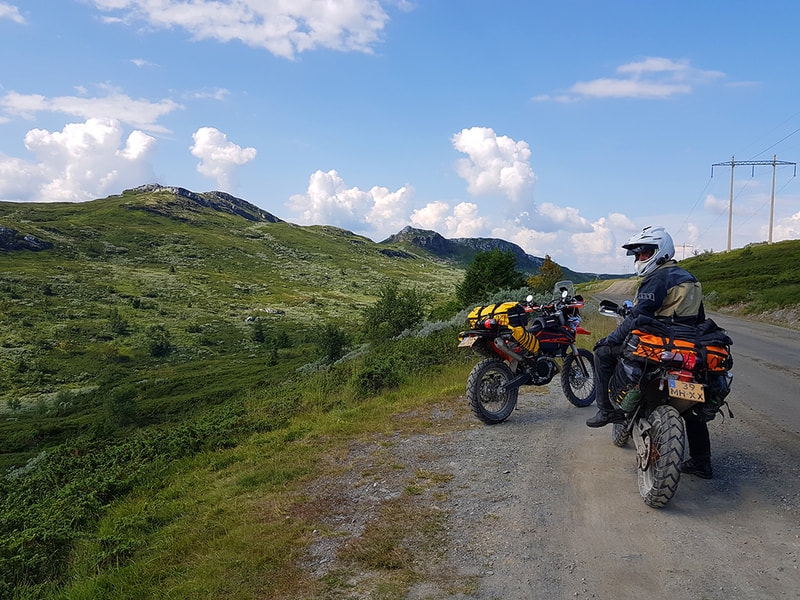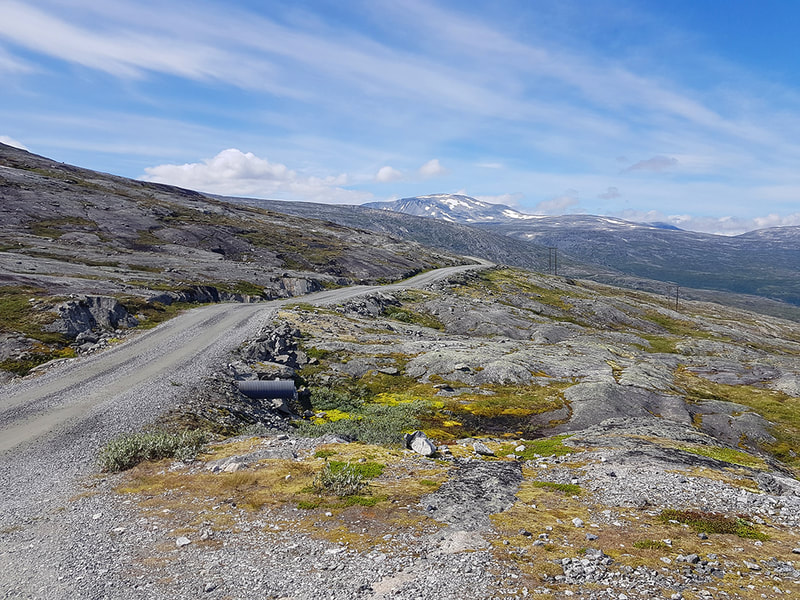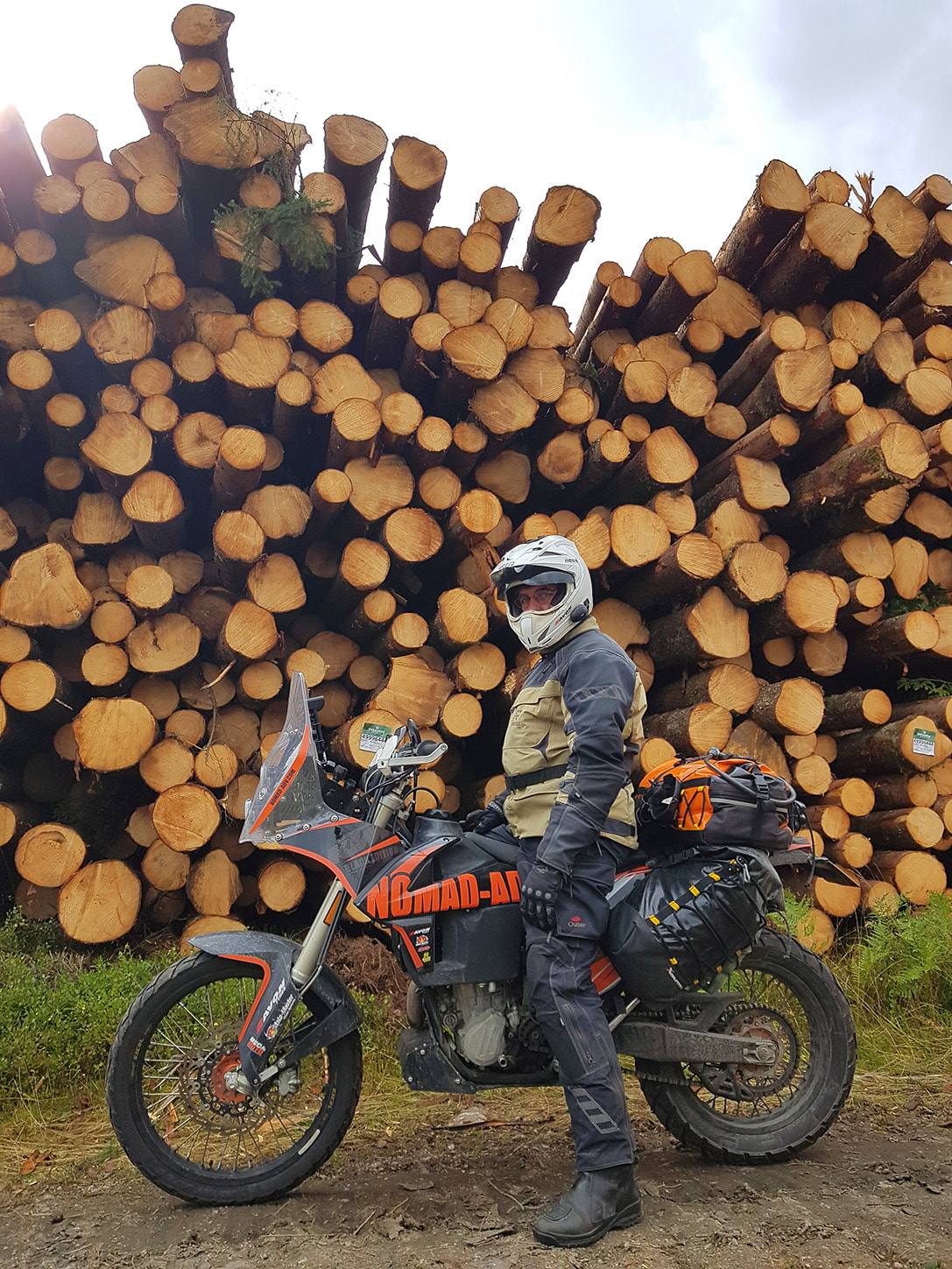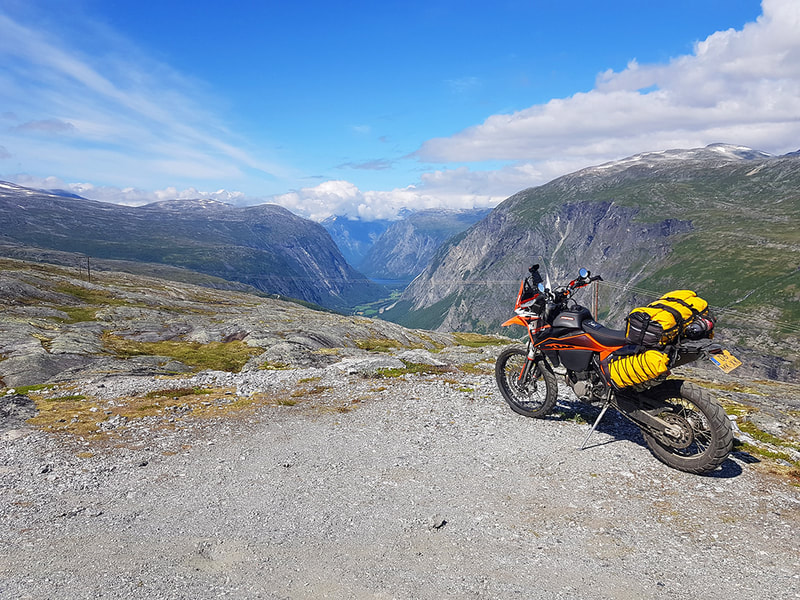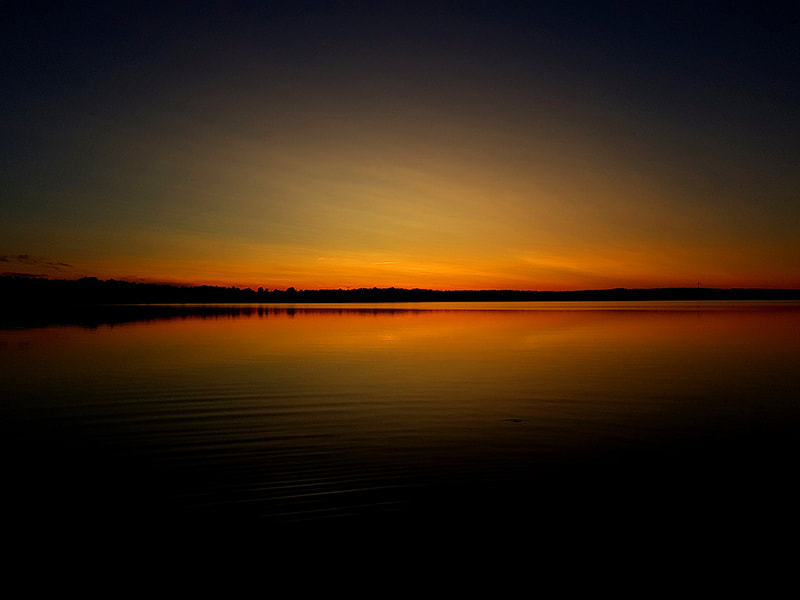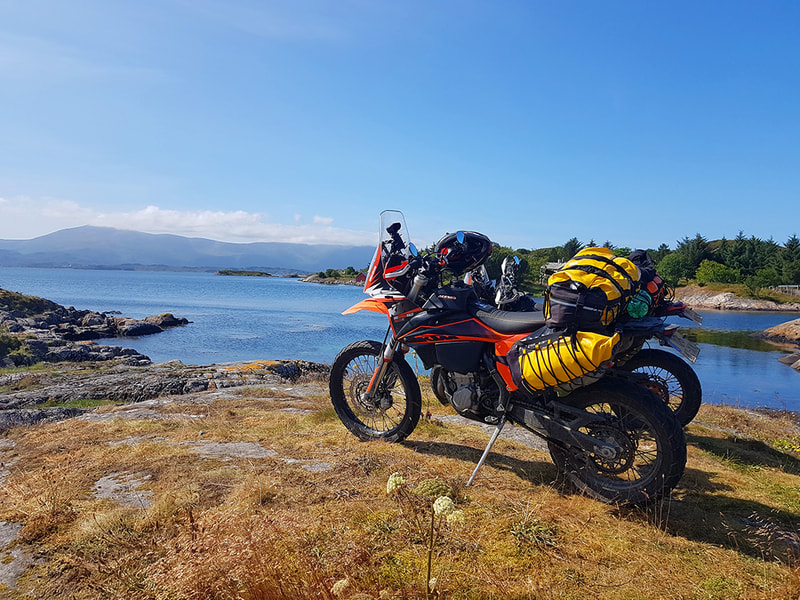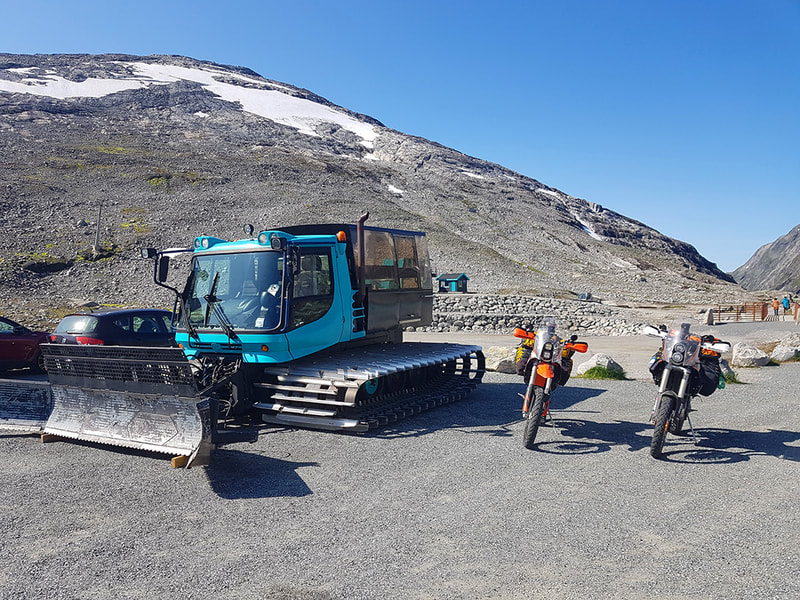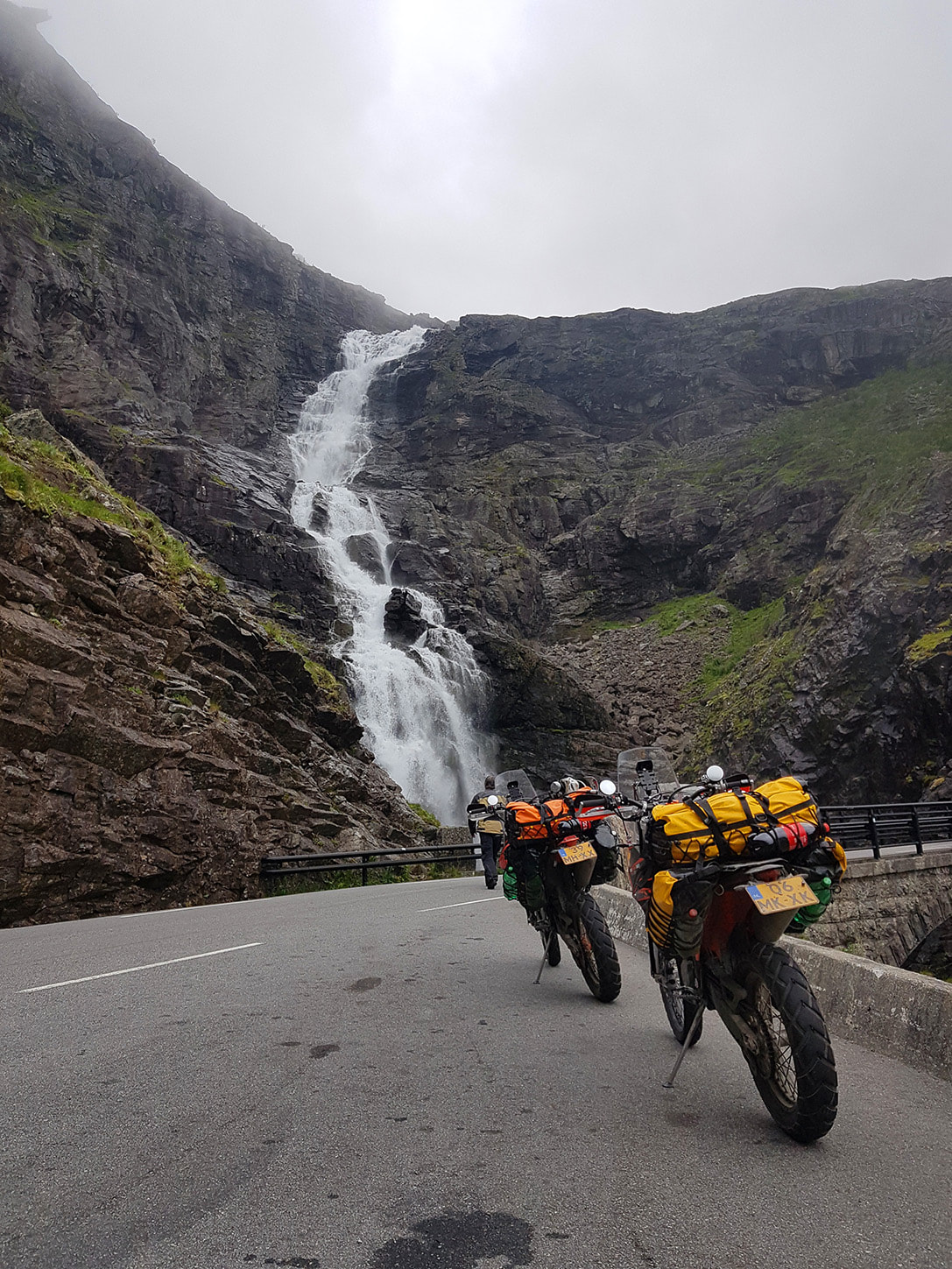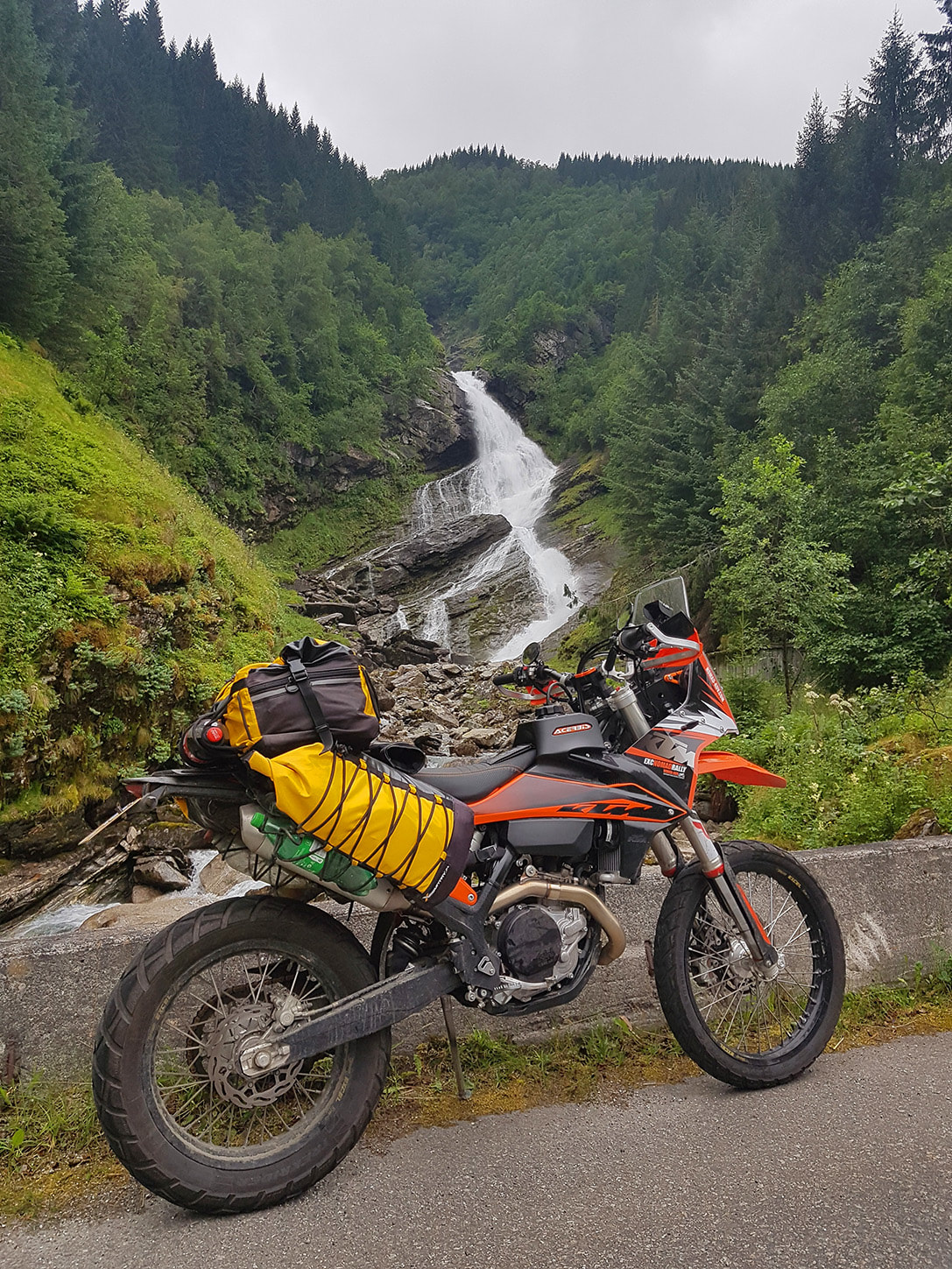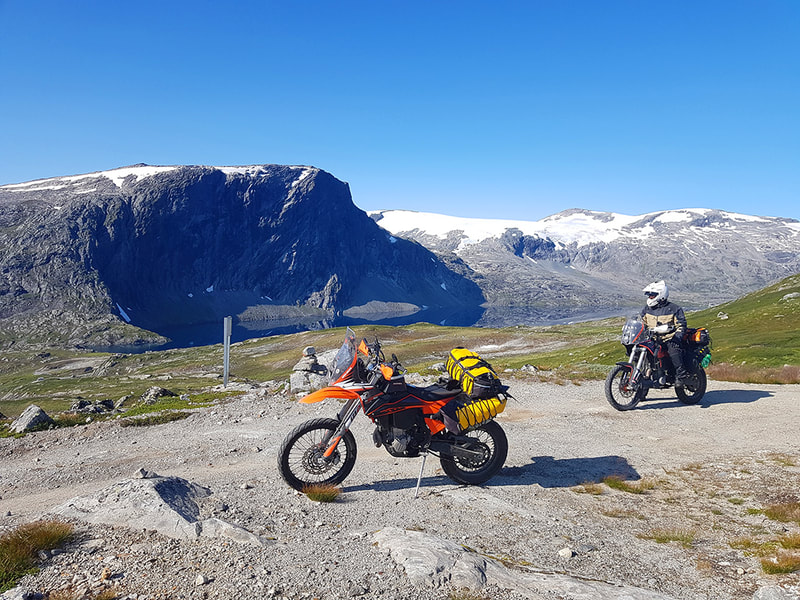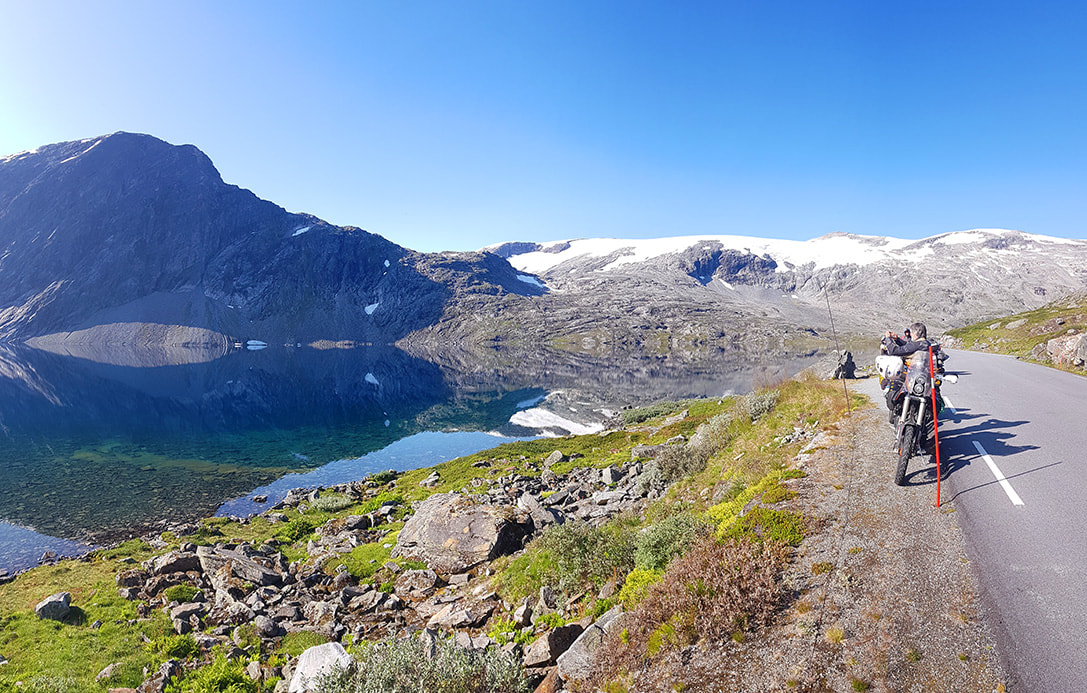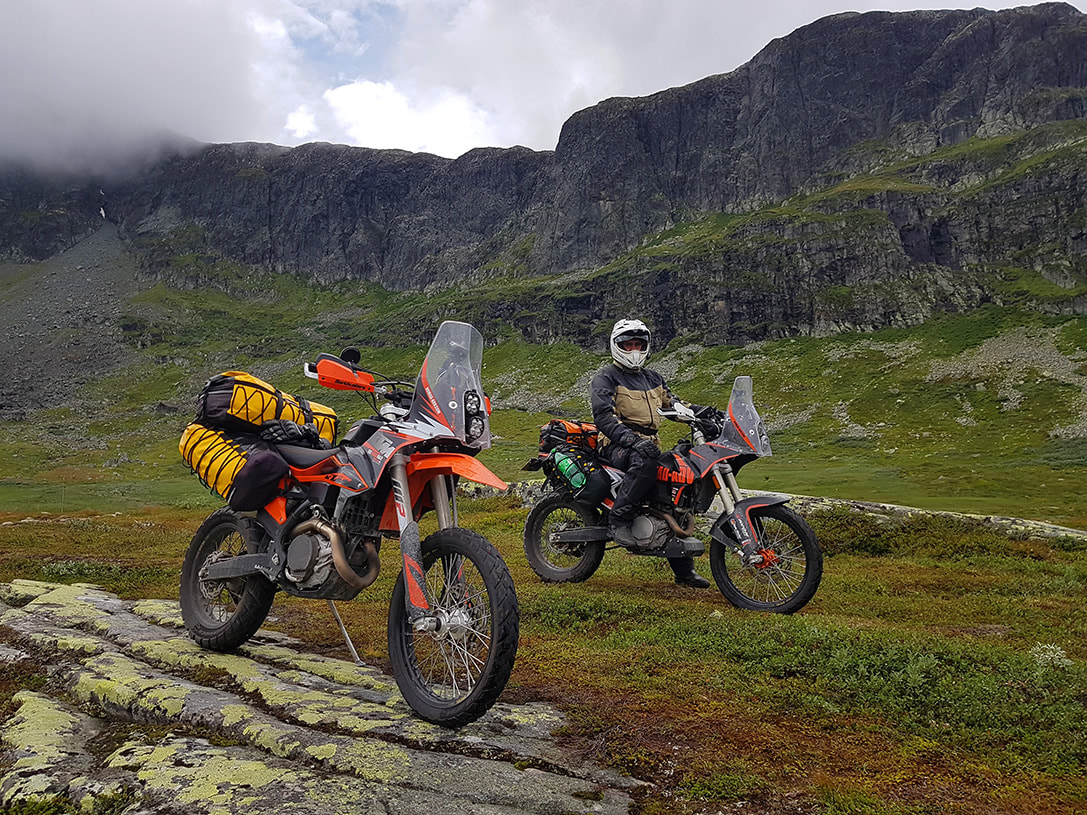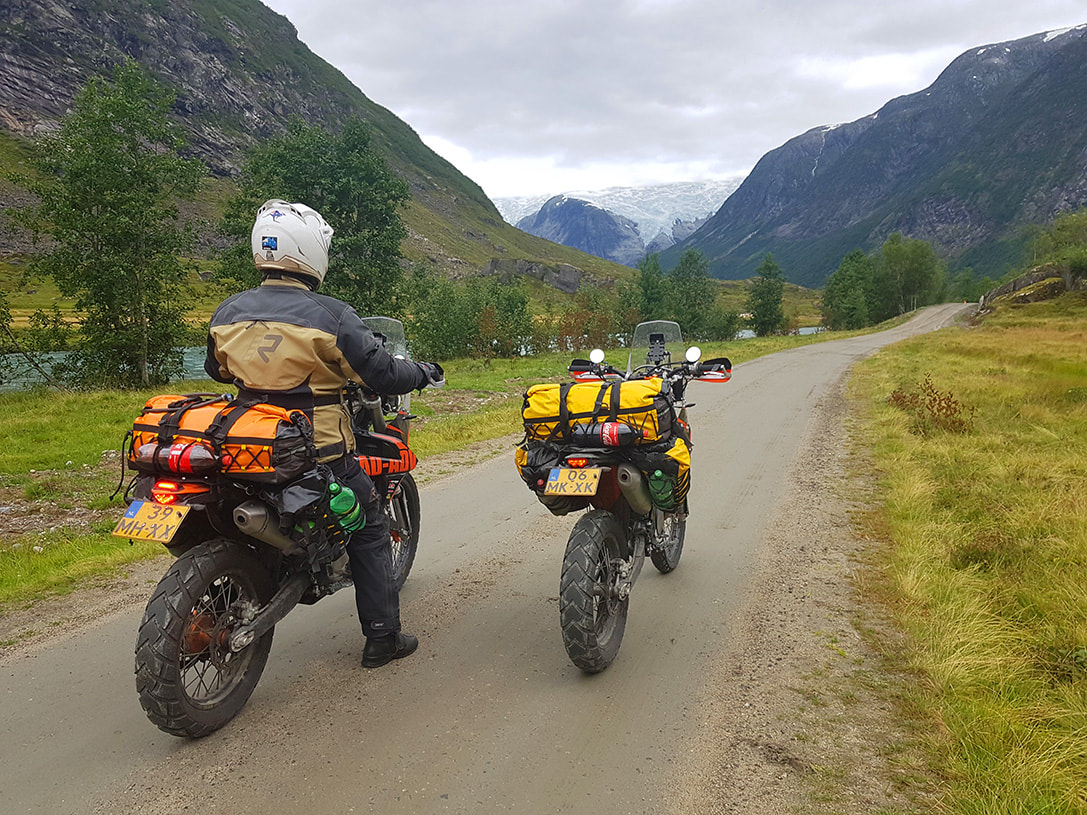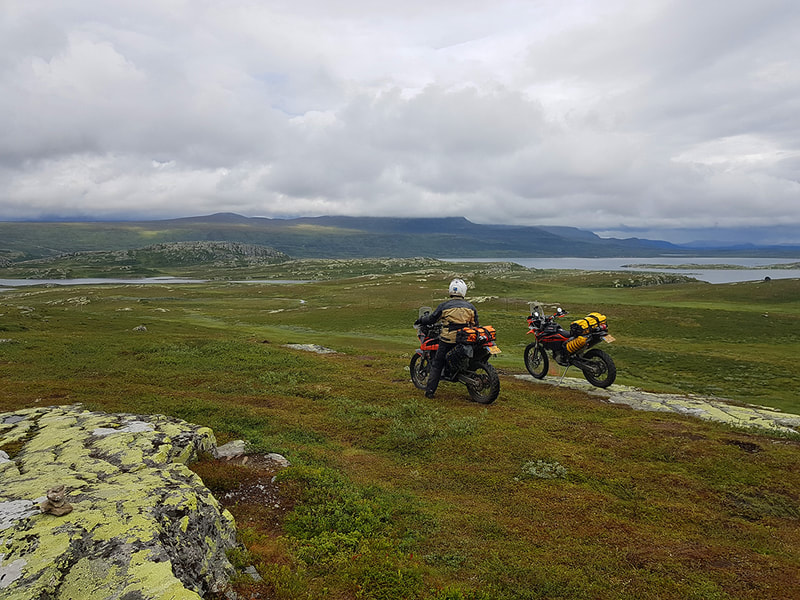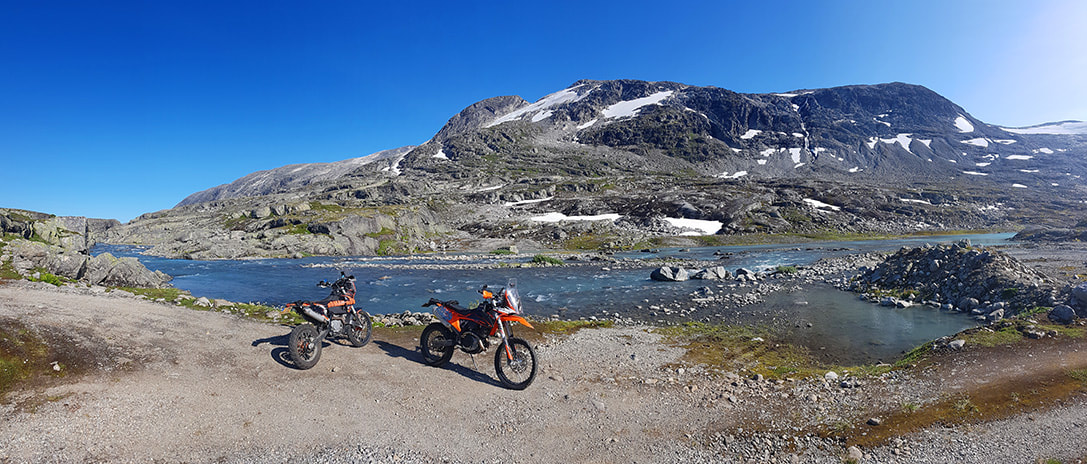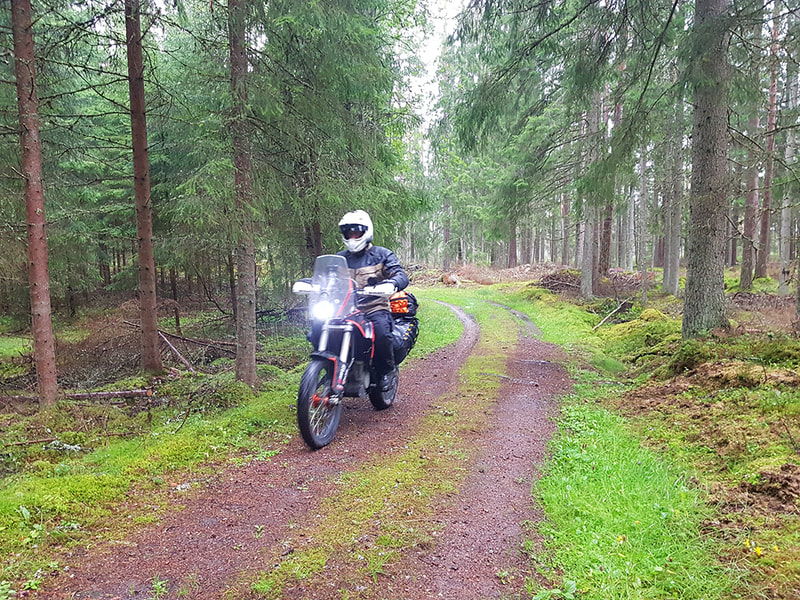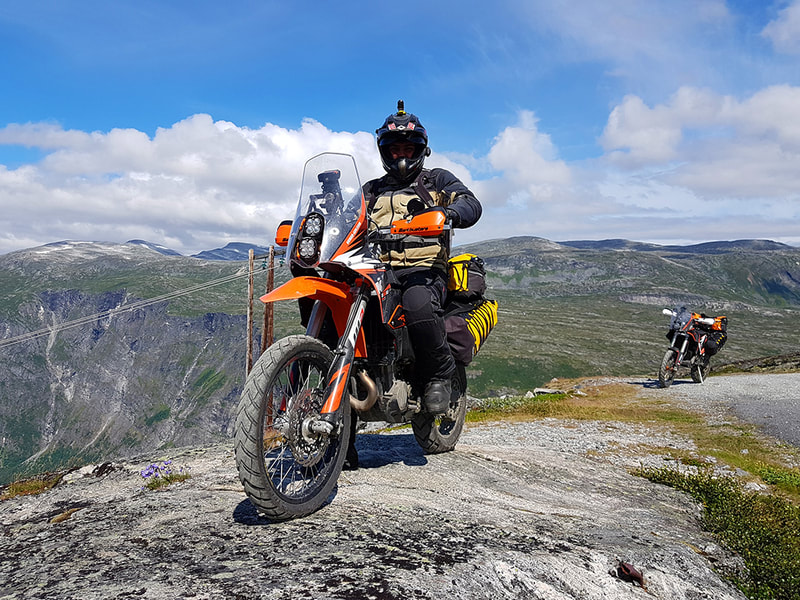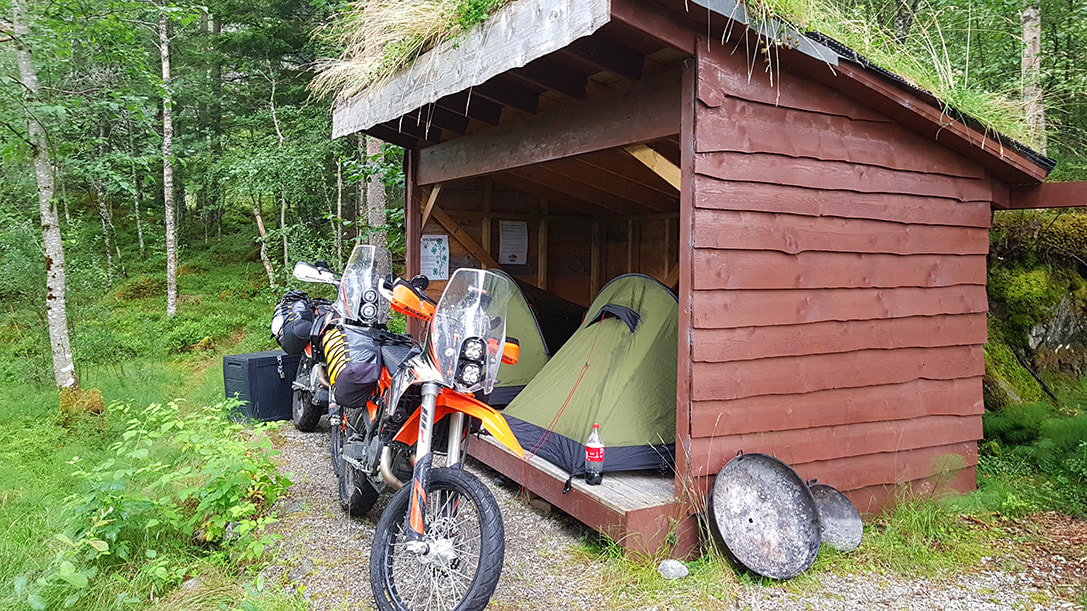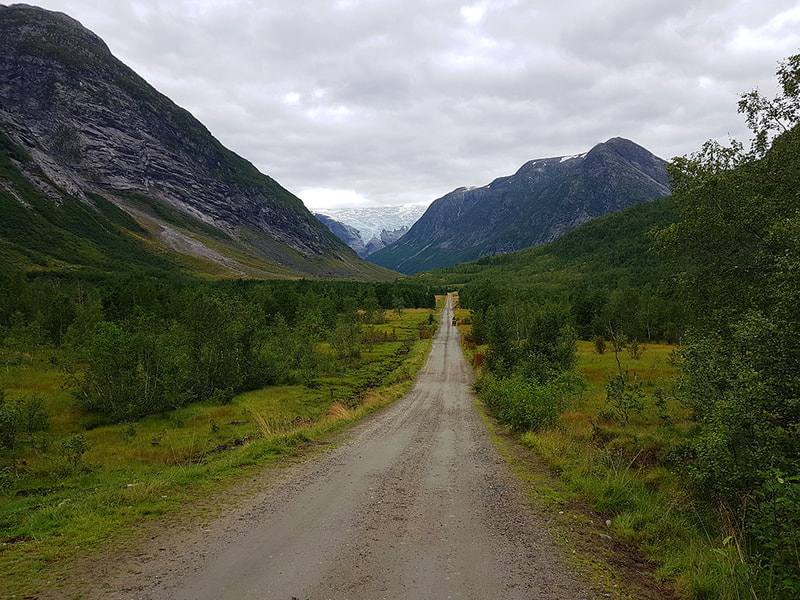Two EXCs to Sweden and NorwayEurope has a lot of variation in landscapes and cultures. Even if we only look at the western side of Europe they range from seemingly endless forests in Northern Scandinavia to the almost Australian like landscapes in Portugal, with the stunning Alps in between. Cultural differences go deeper than just the 24 official languages spoken inside the European Union too. The way of life in the southern half is distinctly different than central or northern Europe Europe's main problem, from a traveling point of view, is over-population. But despite this there are still areas to be found where it is quiet. Most of Norway, Sweden and Finland for example. There is also the Trans European Trail, which we picked up just outside Malmö.
We did the trip on two KTM EXCs, both 450s, a 2018 model and a brand new 2020 model. While both have the Nomad conversion, the 2020 model was a prototype undergoing it's 10,000 km test! |
No matter where you want to go in Europe, there is an awful lot of asphalt roads to cover if you want to go anywhere. In Holland that translates into multi-lane highways chock-a-bloc with trucks, buses and an endless stream of cars. In Germany, well known for their extensive network of Autobahns, most sections have no speed limit. While trucks are doing 85-90 km/hr, in the lane next to them fast saloons fly past doing 250 km/hr or so… In between we have the brigade who finds it acceptable to check Facebook, E-mail and be on the phone while driving… throw in seemingly endless roadworks and being there in the middle of a heatwave and you'll get a lethal mix. All it takes for a gigantic pile-up with multiple mangled corpses permanently incarcerated in tin is one person misjudging the speed of another. Seeing a big Audi reduced to about half a metre in length, wedged under a truck is a pretty sobering sight… Especially when being there on a motorcycle. Europeans are also known for their chronic tailgating. They think nothing of being 3 mtr. behind you at highway speeds, while that should be a minimum of 60 mtr. according to the two seconds rule. And the 3 seconds rule does not take into account drivers which are not alert.
|
So why is all this on a travelling page? First of all because it is unfortunately what you'll also encounter when covering big distances in Europe, lots of traffic. Especially so in the holiday season when it's even busier than normal. Secondly because it is normally not the strong point of an enduro to cover 1100 km in a day and a half on overcrowded motorways. In reality though, with some modifications, it's not more boring than being there on a big touring bike, while the modified enduro wins on ride comfort(!) and the seating position is much better for your spine as you don't resemble a bag of potatoes on them. And, last but not least, at least we have a lot of fun to look forward to at the end of the motorway when the TET begins!
|
|
On the motorways and Autobahns the EXCs worked very well. The Seat Concepts seat allowed for 700+ km days, the cush drive hubs make the ride much smoother while the screens make life much easier for our arms and neck. The bikes returned a brilliant 27 km/ltr doing 110 km/hr on the motorways. Fitted with just a 17 litre tank that still gives a range of 450km, which is plenty anywhere in Europe. Both engines are in standard tune, no aftermarket exhaust, no specialised tuning. All we changed on the engine was a bigger and stronger clutch cover to replace the notoriously weak OEM one. The cover gives more oil capacity and thus allows for longer service intervals too. We also changed the gearing to 14/48 and swapped the knobbly tyres for Avon TrekRiders.
|
Once we crossed the bridge to Malmö we left the motorway and entered the Swedish TET. The first part are smaller asphalt roads but it doesn't take long before the gravel roads start. What a blessing after a day and a half of nothing but traffic! The roads are sweeping smooth gravel with a few castles thrown in for good measure. The moment we hit the gravel, Sweden somehow changed. Most people tend to ride north from Malmö and take the quickest route into Norway, i.e. highway… and then claim Sweden is a bit boring. It will be, but take an inland route and you'll find the real Sweden! The TET is such a route and thanks to the Swedish Linesman a beautiful one! It shows Sweden in all its beauty as it takes you through old forests, past pristine lakes and through farming areas. No hordes of tourist to be found anywhere, no traffic, no buses… nothing but total silence. Sweden enjoys allemansret which very roughly translates into 'freedom to roam'. It allows for free camping, among others, which mean we can pitch a tent for the night along one of the many lakes and rivers. We have small tents, as we like to travel light, which means we can just about pitch them anywhere. The feeling of freedom and solitude, especially after an extremely busy period at work was more than welcome!
|
For days we roamed over roads and tracks through scarcely populated areas. Nature as it should be. We stopped often, took photos as mementos and had smoko and lunch along lakes which were totally empty except for birds, fish and the occasional snake. We only dropped into smaller towns for fuel and food and then 'disappeared' in the woods again. It was pure bliss!
We enjoyed every minute of Sweden. If you're an ace enduro rider looking for technical challenges and rock climbing on a bike then the Swedish TET is probably not for you. There are a few mildly challenging sections but it's easy enough to do with some common sense. It highlighted once more that the EXC is the perfect bike for me to travel on. While some claim you'll have more feeling of achievement on a heavy bike, I just prefer to enjoy the beauty of this planet rather than just focussing on the track ahead. I chose an EXC because it allows me to go where I couldn't before, and do it with ease. It gives me time to look around me and experience where I am, rather than have my eyes firmly planted on the road to avoid problems. The Swedish TET leads you up to the Norwegian border to join up with the Norwegian TET. As beautiful as Norway is I actually felt a bit sorry for leaving Sweden. I wanted to stay longer… which we would as we would be coming back to Sweden after Norway! |
|
Norway is very different from Sweden. Norway is more rugged. A clearly harsher landscape where it seems life is a bit harsher too. It's stunning mountain vistas, thousands (millions?) of waterfalls and fast flowing rivers lure 1.3 billion tourists a year. Not a place where you can find tranquility then… or can you? When you visit the touristy bits and take the touristy roads then you'll find all of the 1.3 billion tourists there as well. After a week you're ready to shoot inconsiderate motorhome drivers (which is most of them) and have a deep embedded hatred towards touring coach drivers too. Yes I know they have a job to do, but steering your 12 mtr long coach down a road made up of hairpins into the Geiranger fjord is just anti-social stupidity in my book. Buses stuck in hairpin bends, cars and motorhomes with nowhere to go and that 8 hairpins in a row… The Trollstigen is even worse. They have traffic controllers there now as the road is too narrow for coaches but they come up and down anyway. Ban the bloody things. The locals we spoke to have had enough of it, they have to put up with motorhomes and buses the whole summer and year after year.
Once you're away from the touristy bits though there is plenty of peace and tranquility. Norway enjoys Allemansret too but it's a bit more difficult to find free camping spots. There are more and more areas where 'no camping' signs are put up as Norway is much more geared towards making money out of tourism. It's a bit too commercial in places for my liking anyway. Once out of town and in the highlands there are plenty of places to be found. Most are swamped with motorhomes though and when we were there it was bloody cold and wet higher up in the mountains. We found small inconspicuous spots along rivers. Places where motorhomes don't fit and which we thus had for ourselves. Most were sheltered by trees too. |
|
Quite a few roads are private, which means you'll often have to pay a toll to the owners. There is a system in Norway called Vipps, which allows you to pay with your mobile phone. It doesn't work for foreigners though. Most of the time we just rode on, and when we did meet the owner of the road we explained the situation and paid him/her on the spot. Never had a problem. Obviously tolls can add up and there is a feeling of 'why do we have to pay them, its robbery'. I don't feel that way as maintaining a road in the mountains is hard and expensive work. Powerslides and the likes are therefor not appreciated I would think :-) It also allowed us to keep away from the masses. Not all roads are toll by the way, in fact most are free.
I don't think Norway has any non-beautiful parts. You can virtually stop anywhere and take a beautiful photo! |
We followed the TET for a while and then veered off further north making our own route as we went along. Looking for the narrow and winding roads rather than asphalt. We had such a great time that even the weather couldn't dampen our spirits. The long range due to low fuel consumption allowed us to explore and try dead end roads into the mountains which usually lead up to stunning areas.
|
We took a cabin once as a storm was setting in. Sitting on the verandah that evening, enjoying ourselves much more than we would have done in a wet tent, we saw keen fishermen in waders in the middle of the river trying their luck. I never knew you needed that much gear to catch a fish… :-) As the weather would be pretty wet the day after we decided to stay another day, wash our clothes and dry them in front of the heater.
The highlands in Norway, the glaciers, stunning waterfalls and wild flowing rivers make for a landscape which is impressive and humbling. Looking at the majestic mountains still covered in snow and the end of the summer make you feel tiny and at the same time lucky to be able to see it. My phone's screen buggered up on the first day which meant I could hardly take any photos. Most photos you see are therefor made by Mike, which strangely enough gave me even more time to enjoy the place I was in. It remained stunning to the very last day too. |
The route back home went via Sweden again. We didn't follow the TET this time as we don't tend to ride the same route twice when there is plenty more to see as well. Our own route was mostly gravel too and followed the Dalsland canal for a bit. Being at the end of the summer the weather turned wet and windy at the end but we still had a great time!
|
Mechanical issues and maintenance
We replaced the oil every 3000km and had no measurable oil consumption once the engines were fully bedded-in. Some may claim an EXC is bedded-in after 4 hrs of use but the engine oil and it's magnetic plug tell a different story. Both engines were fully bedded-in after about 5,000 km. After that we found no more debris on the magnetic sump plug and the engines ran noticeably smoother. We had two small issues on the trip, the first was on the new bike when the side stand spring fell off, dropping the side stand to the ground. The top bolt holding the spring had disappeared, after which springs and bracket fell off. We managed to find all the parts back, including the little bolt(!). Nothing was damaged, the thread on the bolt still fine so we simply re-fitted it with Loctite. The second issue was on my bike which suddenly stuttered to a halt. The ignition lock must have had a loose contact in it, grounding the engine kill wire. Barely 10 minutes later, with the earth wire cut, we were on the road again. After 10,000km we replaced the front sprocket for a new one. As the front sprocket is much smaller than the rear it also wears faster. Replacing it when it starts to show signs of wear keeps the chain and rear sprocket alive much longer. The front sprocket indicates we can expect 20,000km+ from the chain and rear sprocket (Moto Master). We use Tutoro chain oilers, also when riding gravel roads. They work well, keep the chains lubed and clean. We did the whole trip on one set of tyres, and there is in fact still plenty of thread left for at least another 5,000 km (making a grand total of 15,000). They work very well on both highways and gravel and grip very well when it's cold and wet too. In really loose sand a knobbly will probably work better but even-though we rode a lot of sand roads at the end of summer, and the tyres had already 10,000 km under their belts when we did, we had no issues with them whatsoever. I had one tumble when my ambition outweighed my talent as I tried to tackle a sandy corner in motocross style. Some can powerslide through it, as I quickly found out I can't. No harm done but a bruised leg and a good reminder that I'm not Toby Price! |
